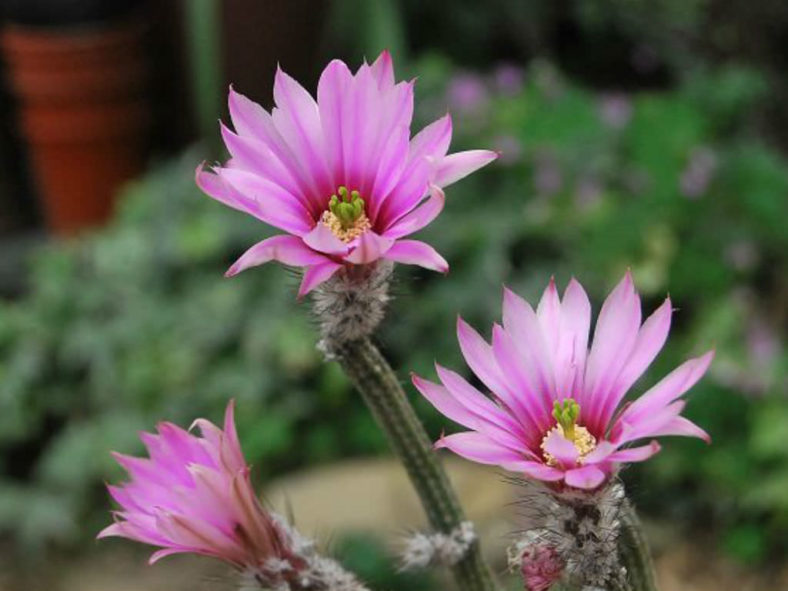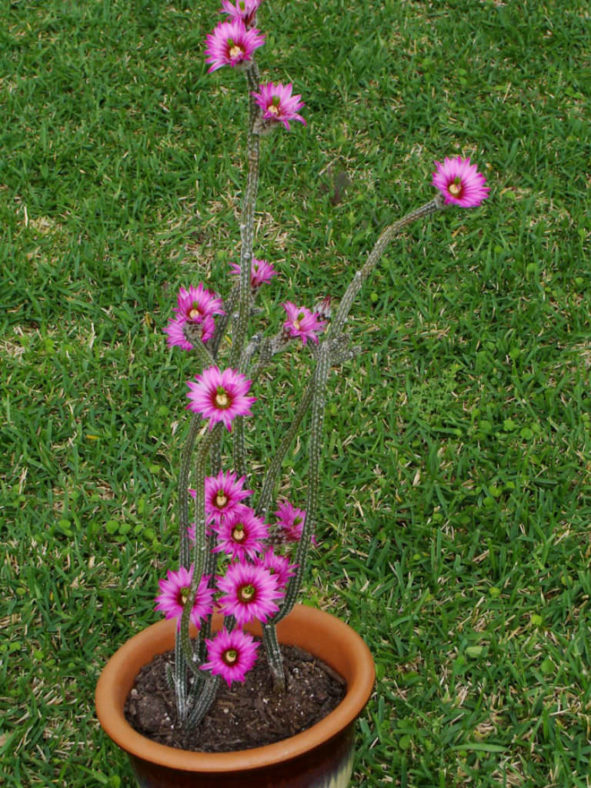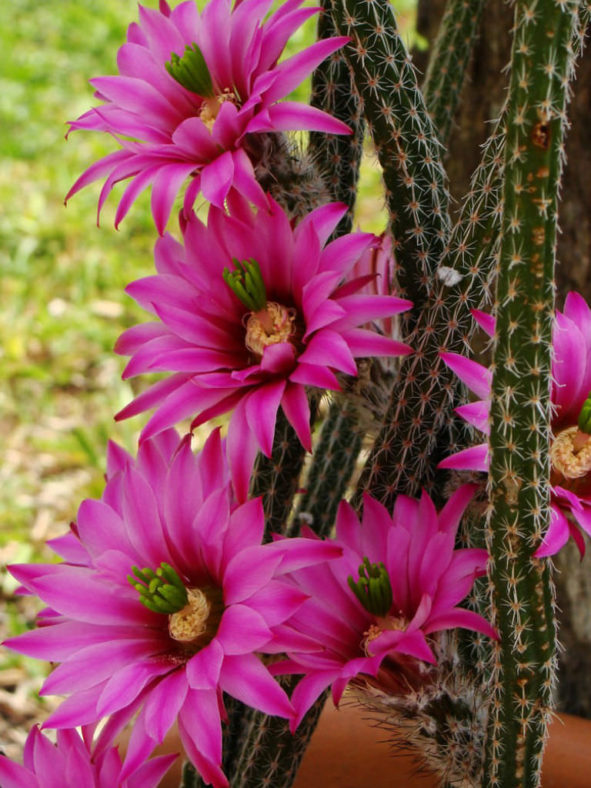Scientific Name
Echinocereus poselgeri Lem.
Common Name(s)
Dahlia Cactus, Dahlia Hedgehog Cactus, Dahlia Apple Cactus, Lead Pencil Cactus, Pencil Hedgehog Cactus, Pencil Cactus, Sacasil, Zocoxochitl
Synonym(s)
Cereus poselgeri, Cereus tuberosus, Wilcoxia poselgeri
Scientific Classification
Family: Cactaceae
Subfamily: Cactoideae
Tribe: Pachycereeae
Genus: Echinocereus
Etymology
The specific epithet "poselgeri" (pronounced "pos-EL-ger-ee") honors Heinrich Poselger (1818-1883), a German botanist who specialized in studies of succulent plants.
Origin
Echinocereus poselgeri is native to Mexico (Coahuila) and the United States (southern Texas).
Description
Echinocereus poselgeri is a shrubby, sparingly branched cactus with slender, cylindrical stems with 8 to 10 ribs lined with clusters of closely appressed spines. The stems are initially erect, later sprawling or clambering, and can grow up to 4.3 feet (1.3 m) long and 0.8 inches (2 cm) in diameter. The spines are stiff and straight, usually tan, brown, or black, sometimes yellow, pale pink, ashy white, or gray. Each areole bears 8 to 16 radial spines and usually one central spine.
The flowers are rose-pink to pink-purple and appear in late spring and early summer. They can reach a length of 2.4 inches (6 cm) and a diameter of 2.8 inches (7 cm). The fruits are egg-shaped, range from dark green to brownish, and can grow up to 1.2 inches (3 cm) long and 0.6 inches (1.5 cm) in diameter.

How to Grow and Care for Echinocereus poselgeri
Hardiness: USDA hardiness zones 9a to 11b: from 20°F (-6.7°C) to 50°F (10°C).
If you can grow other globular cacti successfully, you can most likely grow Echinocereus well. One of the key factors in success with these is avoiding any hint of wet soil. Because their root systems are weak, they are especially prone to root rot, which can eventually kill your plant. Otherwise, they thrive on a program of intense, bright light, little water, and a steady diet of light fertilizer. These cacti are vulnerable to mealybugs and aphids.
Echinocereus are slow-growing cacti that should only need repotting every other year or so. You can prolong the time to repotting by removing plantlets and potting them up in their own pots. When repotting a cactus, remove it from its pot and remove any clumped soil. These plants tend to be shallow-rooted with weak root systems, so take care not to damage their roots.
Learn more at How to Grow and Care for Echinocereus.
Links
- Back to genus Echinocereus
- Succupedia: Browse succulents by Scientific Name, Common Name, Genus, Family, USDA Hardiness Zone, Origin, or cacti by Genus
Photo Gallery
Click on a photo to see a larger version.

